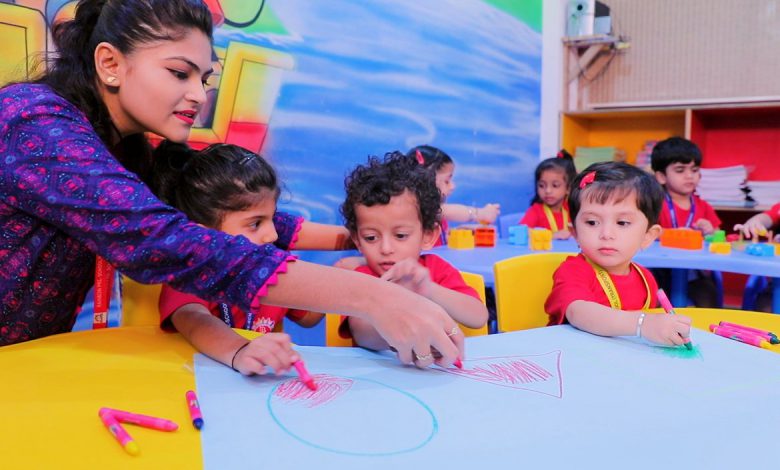Enhance Kids’ Writing Skills: 6 Effective Tips

The first mark your child makes on paper is a great surprise. Interesting and visually appealing things excite children who then want to follow, capture or copy those things. Also, every child takes his/her own time to develop a skill. So, there’s no need to rush or panic about their speed or progress.
Let’s understand the various stages that children pass through to become” good writers”.
6 steps to train kids to write
1. Round objects:
Children love crawling after balls, small pet animals or other toys. This is the first instance of an eye-body coordination where the sight of an object excites children enough to follow it. Squishing soft toys builds strength in the hands of children. These prepare them for their first crayon ‘stance’.
2. Chalks to crayons:
The bigger muscles get adapted to movements faster than the smaller muscles throughout the human body. So give children fat chalks that they can hold by making a fist-like grip with their fingers. Ask them to make any sort of marks they want to, on flat surfaces such as clean slates.
Children who are just over a year old will make random scribbles and in this way, accustom their arm muscles to the pressure they apply on the surface with chalk. Once they get a hang of it, give them a box of colourful crayons to start with.
3. Colouring books:
Give children an art book with blank shapes and ask them to fill these shapes up with crayon colours of their choice. This process gives them an idea of outline. The more precisely they colour and the cleaner they keep the outline, the better they advance towards writing their first alphabet.
4. Pencil grip:
The broader base of crayons is easier to get a grip over when compared to a pencil. So, one has to train his/her fingertips to be able to hold a pencil firmly. Since children have soft fingertips that need to get habituated to hard surfaces of a pencil, you can wrap a cotton cloth or clay around a pencil and help children get a grip over the pencils with their fingers easily.
Don’t bother about the way children hold the pencils. Children explore various options with their thumb, index and middle fingers for utmost comfort. Let your children choose their grip on pencils. Use triangular, hexagonal and round pencils to test the grip.
5. Tracing:
After children are comfortable with the pencil grip, introduce them to tracing alphabets. Start with bigger tracing so as to allow free movement of children’s wrists and fingers. Gradually, reduce the size of the alphabets for advanced hand movement.
Progress in tracing alphabets should be fast enough for your children to get on with more of alphabets in the same semester. Check the spacing between multiple letters that they trace. Once they can keep a uniform space between letters, introduce the concepts of words.
6. Words and sentences:
Instead of making children write, read the words aloud. Help them identify the words by hearing them and writing them down without you helping with the spelling. Their effort to write the correct word as per their understanding of the sound, helps them develop a sense of spelling.
Be patient as it takes 5-6 years for children to begin to write words and graduate to scribbling a few sentences. Enjoy the process of teaching writing. Your child needs to love writing. Only then, would they write their masterpieces someday!
Read also: How to Help Your Child Improve Their Handwriting





